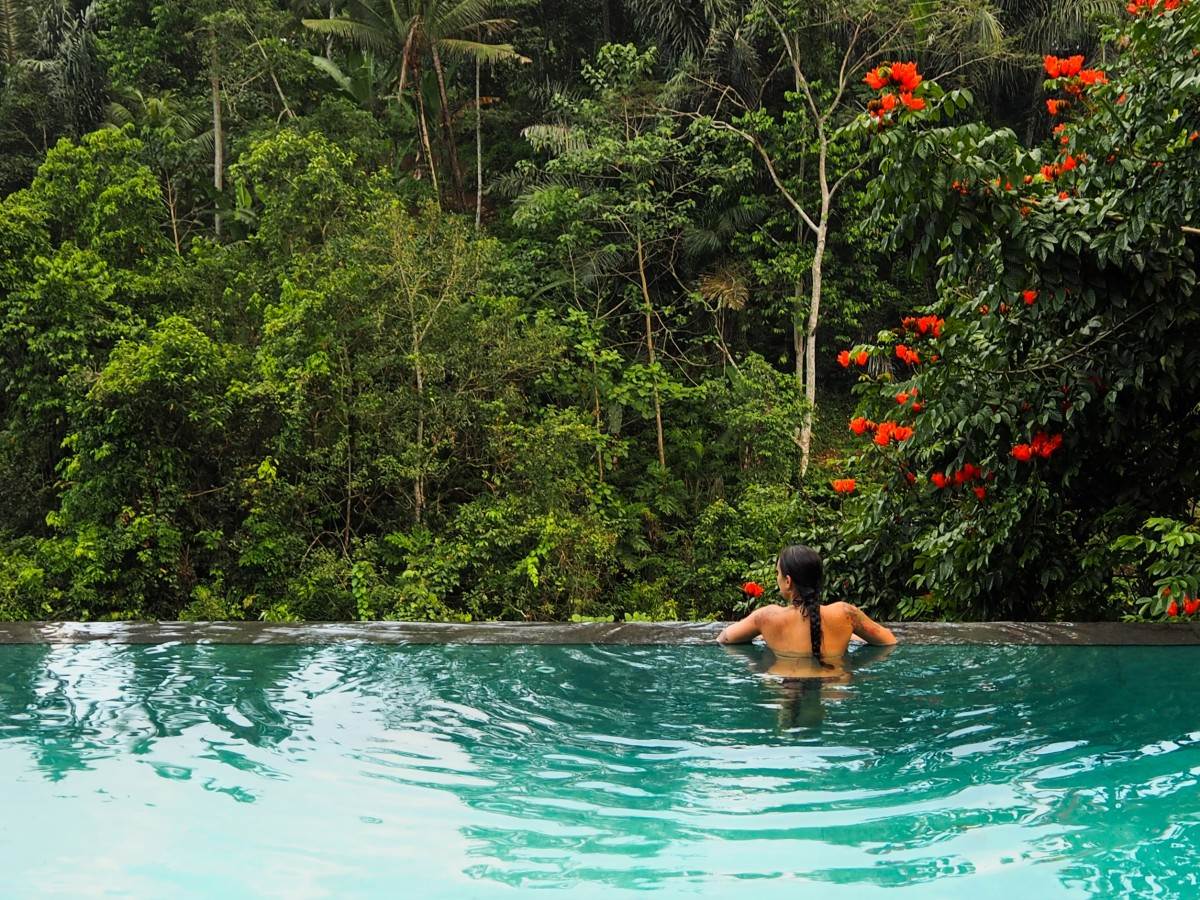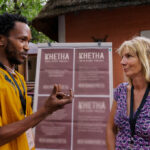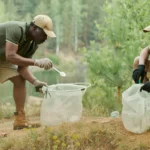To inspire young people to truly connect with nature, environmental educators should move beyond traditional classroom methods and embrace the “teach naked” approach. Photo: Pxhere.com
By Fred Kockott and Fortunate Mathonsi
Want youngsters to embrace nature and all its wonders? Then ditch traditional classroom habits, venture into wild spaces — even if that’s just stepping outside your back door — and teach “naked.”
So says animal behaviourist Aliza le Roux, who joined two other environmental educators on a recent webinar about getting youth energised about climate change and enthused about the environment. Organised by Oppenheimer Generations Research and Conservation, the 23rd webinar in the Tipping Points series was titled “Making Young Blood Run Green.”
The online seminar was facilitated by Pumla Dlamini, a Research Associate with OGRC.
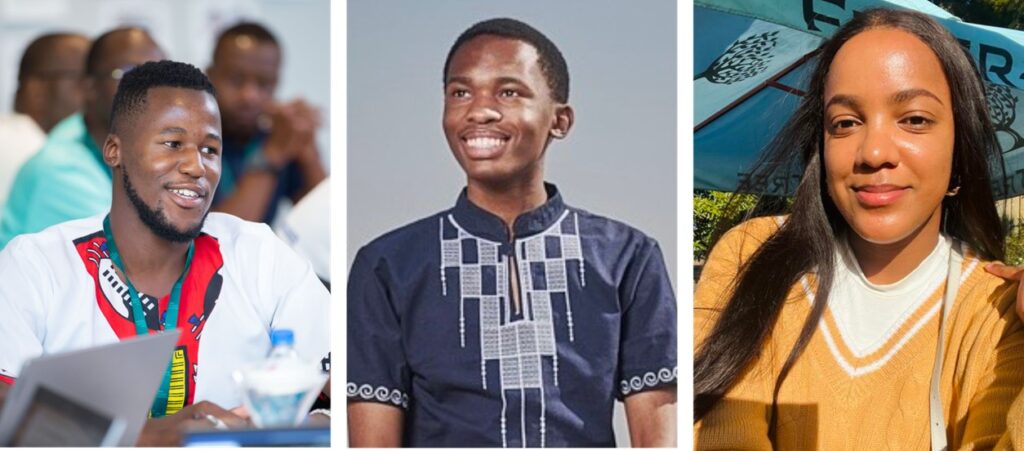
Teaching naked
The panelists agreed that if people can just hear it, feel it, and live it, the message will resonate, and youngsters, in whose hands the future of nature rests, will quickly get the message.
“I dare people to do what they call teaching naked,” said Le Roux.
The professor of Zoology at the University of Free State in QwaQwa was not literally suggesting stripping down in the classroom, but rather exposing youth to Mother Nature “in all her glory.”
Her point was that educators should move beyond PowerPoint presentations and textbook material that could be shared online. She advocates a hands-on approach to teaching and sparking curiosity by stepping out of the classroom for practical exercises and interactive games.
Le Roux emphasised that teachers need to risk their dignity and embrace the possibility that things may go awry when engaging with students in tackling complex case studies and exposing them to fieldwork — even something as simple as observing feral cats on her university’s QwaQwa campus.
“Some people call it teaching naked because you are totally vulnerable; you take the podium away from yourself and you are exposed,” explained Le Roux.
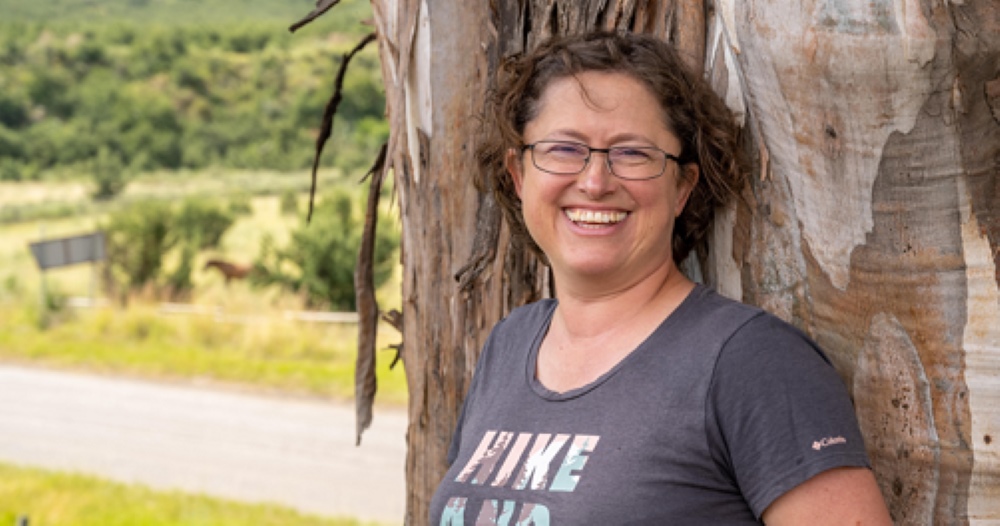
Personal inspiration
Le Roux’s interest in animal behaviour is deeply personal. She recalled childhood hikes, including a memorable one at age eight when a snake slithered across her foot. “That’s what fired me up and got me excited, and it’s the same still, despite the digital age,” she said.
While technology is valuable for research and teaching, she believes it should handle the “boring stuff” as it could never do be as exciting as the creative experience of fieldwork – the real seeing and feeling stuff.
Animal behaviour
Le Roux also pointed out how animals communicate succinctly. Take baboons, for instance. With a single, “Whahoo!”, they coney a wealth of information, said Le Roux, punctuating her observations with a throaty bark. “Everybody in the immediate vicinity will know exactly who said what and what to watch out for now.”
Unlike baboons, humans tend to the garrulous. “We need to give hour-long addresses, wearing tuxedos and whatnot,” she said.
Roots & Shoots
Following Le Roux, Zama Ngomane, National Coordinator for the Jane Goodall Institute’s Roots & Shoots community program, joked that he at least knew how to say hello in Chimp: “Who-whoo, whoooo, whooooo! whoooooo! whoooooooo!”
Primate pleasantries aside, Ngomane presented his formula for winning over young hearts and minds to the green cause.
He stressed the importance of making environmental knowledge accessible by breaking down complex concepts into relatable everyday experiences.
Ngomane noted that while young people hear about global warming in textbooks and on TV, they struggle to relate to it amidst classroom distractions and poor learning conditions.
Engaging them through action, as Roots & Shoots does, helps make the issues relevant. “It … gives them all the knowledge available about a particular topic and makes it relatable to their community, their school, to their group. Then we take it further and ask, ‘What are we going to do about it? What are the next steps?’”
Peer influence
Ngomane recounted an experience from his early days as a coordinator to illustrate his point. “We were with a group of young schoolgirls discussing Dr. Jane Goodall’s work, and one girl said, ‘I love Dr. Jane Goodall and her work with chimps, but I also love Greta Thunberg. She’s really cool and just like me.’” At the time, Thunberg, the Swedish environmental activist, was inspiring many young people to action and protest.
“So the greatest influence you can have on youth is other youth,” said Ngomane. “Seeing their peers involved and participating—that’s what makes the big difference, and that’s what we aim to achieve.”
Overcoming barriers
Otsile Nkadimeng, Co-Founder of Sundial Movement, expressed concern that few young people truly grasp the environmental crisis unfolding around them.
He explained how Sundial Movement and the Fridays for Future South Africa initiative, which he helps organize, provide platforms and networks for high school pupils.
The aim is “to engage on climate change and conservation on their level” and to help youth “conscientize the public and their peers so we can ultimately mobilize lots of young people to take action.” Nkadimeng noted that the “complex, nuanced language” surrounding climate change often hinders understanding and action. “Young people interested in the issue struggle to comprehend the problem due to inaccessible language,” he said.
Other barriers include gatekeeping in policy and environmental activism spaces and a lack of resources.
Youth mobilisation
Nkadimeng believes the solution lies in integrating young people’s insights from their lived experiences with well-resourced organisations that can mobilise grassroots action. “If we merge information with accessible networks and resources, we can create individuals and structures that turn young people’s blood green.”
When asked about zero-budget activities to mobilise youth, Nkadimeng suggested collaborating with existing climate or environmental organisations. For example, Sundial Movement engaged in “artivism,” working with schools to create climate-themed paintings and posters. This approach fostered conversation and creative expression among young people.
Social media, Nkadimeng argued, is a powerful tool for initiating serious conversations. “Platforms like TikTok and Instagram are crucial for Gen Z engagement,” he said. Social media posts are free, and once young people are aware, they can be organised into actions like community cleanups, which have a tangible impact on local environments.
Humour
Dlamini asked Le Roux how to make activities fun and engaging for youth. Le Roux emphasized the importance of humour and being relatable, even if it means embarrassing oneself. “When you let go of the formalities and connect with people, fun naturally follows,” she said. Competitions, even with simple rewards, can effectively engage participants.
Le Roux also noted the value of adapting ideas from other educators and creating local resources. “Experiment with different approaches. It might fail at first, but view it as an experiment and keep trying,” she advised.
Regarding students’ attention spans in the digital age, Le Roux acknowledged the challenge but stressed the importance of engaging students actively. “If my own lectures bore me, then I know the students are just being polite. Be creative and involve them in the learning process,” she said.
Direct impacts
Ngomane highlighted that seeing the direct effects of their efforts, such as in food gardens or cleanups, inspires young people and others around them. “Interactive learning always wins,” he said, agreeing with Le Roux on the importance of recognition and rewards.
Nkadimeng believes environmentalism will increasingly become a mainstream political issue in South Africa, directly affecting people’s lives, as evidenced by recent storms and floods. Le Roux reminded activists that climate change work is a “long game.” “Youth have urgency, but they must remember that progress requires perseverance,” she said.
Ngomane’s advice for young people eager to make a difference: be inventive, brave, and persistent. “You don’t need everything to start. Just begin.” – Additional reporting, Matthew Hattingh, Roving Reporters
- This story was produced with support from Jive Media Africa, science communication partner to Oppenheimer Generations Research and Conservation (OGRC).
Fortunate Mathonsi is a registrar at the Southern African Wildlife College taking part in the Khetha New Narratives 24 training project. Fred Kockott is the director of Roving Reporters. Matthew Hattingh is a lead writing coach.
>> Click here to learn more about the Khetha 2024 Story Project.

